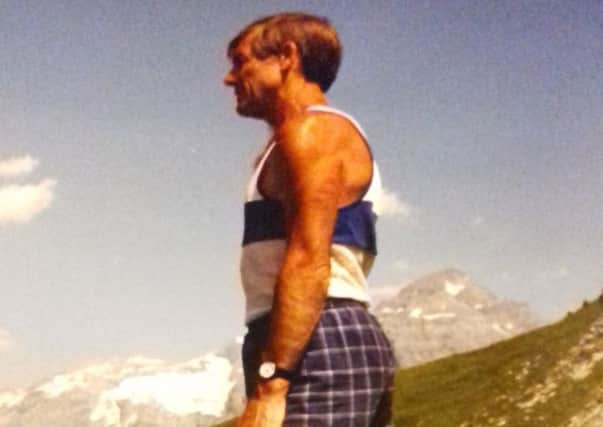Obituary: Alan Heaton, legendary fell runner who loved to test himself in Scottish Highlands


Alan Heaton was a quiet little man who worked in the offices of a bus company in his native Lancashire and liked to run in the local hills at weekends and walk and climb in the Scottish Highlands. In a football shirt, supplemented by a cutdown plastic mac on rainy days, and shorts bulging with sandwiches, Heaton was quite a contrast with today’s runners and their hi-tech tops, hydration packs, energy gels and GPS watches.
He sounds like a character from Monty Python, or Michael Palin’s Ripping Yarns. And indeed, his story reads like something out of Boy’s Own. He was 422nd out 467 finishers in the 1956 national cross-country championships. But cross-country races are only a few miles long. And Heaton’s great strength was that he could just keep going, hour after hour, hill after hill.
Advertisement
Hide AdAdvertisement
Hide AdIn his running outfit the mild-mannered clerk became some sort of running superhero, setting and breaking records as he went. Four years after that unremarkable cross-country performance he ran more than 42 Lakeland summits, including Scafell Pike, the highest point in England, in less than 24 hours, a feat first attributed to the Keswick hotelier Bob Graham in 1932. No one had done it since, and Heaton was more than an hour faster.
Heaton effectively established a challenge that continues to this day, with the record now held by the great Catalonian sky runner Kilian Jornet, though the “Bob Graham Round” retains an air of mystery and secrecy.
Heaton’s passion for hills brought him to Scotland regularly. He ran in the annual Ben Nevis race no fewer than 30 times, with a best time of 1 hour and 48 minutes. There was a Heaton Trophy for the fastest two-man veterans team, named after Heaton and his brother Ken, who was also a notable hill-runner.
Heaton also came to Scotland for orienteering events and to walk, run and climb Munros, with crampons and ice axe. “Alan completed most of the Scottish Munros and most of them in the winter months,” recalled Alistair Patten, who ran with Heaton regularly and served as pacemaker and running companion on the initial and closing stages of Heaton’s historic Bob Graham Round on an uncomfortably hot day in June 1960.
“In February in the 1960s and 1970s we used to spend a week staying at mountaineering huts and tackling the mountains’ winter conditions. It was here that Alan was honing his strength and navigational skills and from here he went on to achieve some amazing record attempts.”
In 1985, at the age of 57, Heaton set out to run over the summit of every single one of the Wainwrights – the 214 Lakeland fells listed in seven guides by the famous hillwalker and author Alfred Wainwright. All but one are over 1,000ft. The total ascent is like running up and down Everest starting at sea level and doing it four times. Heaton ran day after day, stopping only to sleep… and visit a hospital as one of his toes began to swell and he was in agony. It turned out to be septic. He received treatment and medication and carried on, completing the entire 320-mile route in 9 days 16 hours and 42 minutes.
One of three brothers, Alan Heaton was born in 1928 in the industrial town of Haslingden in Lancashire and grew up in nearby Accrington. His father was a printer and later a postman. Heaton attended the local school, where he was perhaps most noted for his footballing skills.
He worked as a clerk with the Ribble Motor Services bus company, enjoyed cycling and walking in the hills. In the mid-1950s he joined Clayton-le-Moors Harriers, where he found others with a similar passion for long-distance fell-running. He won a string of hill races, but his greatest achievements were the records he set for speed and endurance. In 1972 he set a record for running the 268 miles of the Pennine Way, with Mick Meath, of 4 days 5 hours and 10 minutes.
Advertisement
Hide AdAdvertisement
Hide AdIn a variation of the Bob Graham Round, he also set new records for the most Lakeland summits in 24 hours – 42, then 54, then 60. But there were no Olympic Games events and he remained little known beyond the fell-running community. But within that community Alan Heaton was a legend.
He wrote a brief account of his Bob Graham Round, noting that there were “not many people around” to watch him complete it and reflecting on his life in the hills. “I would say that the 25 years of endeavour on the hills has brought me much frustration and disappointment but these are far outweighed by the rewards I have had. Some come from having the help and companionship of many willing people who have given a large amount of time and effort in supporting me, and some from the satisfaction that comes from testing yourself and succeeding in mastering your fallibilities in an environment where you like to be.”
Dave Scott, the president of Clayton-le-Moors Harriers, ran with Heaton regularly. “I was 16 when I joined Clayton in 1959 and he was a god,” he said.
“His achievements are amazing and he has inspired me and many other runners over the years,” Steve Birkinshaw wrote in his book There is No Map in Hell, his account of setting a new record for the Wainwright Peaks five years ago.
Heaton met Audrey Timmis through hill-walking and they married in 1981. He continued running regularly in his seventies and, occasionally, his eighties. When hills became too much, he ran along the canal near his home. Both he and his wife were keen golfers. She died two years ago. Latterly he had Alzheimer’s disease. He is survived by two stepsons.
Brian Pendreigh